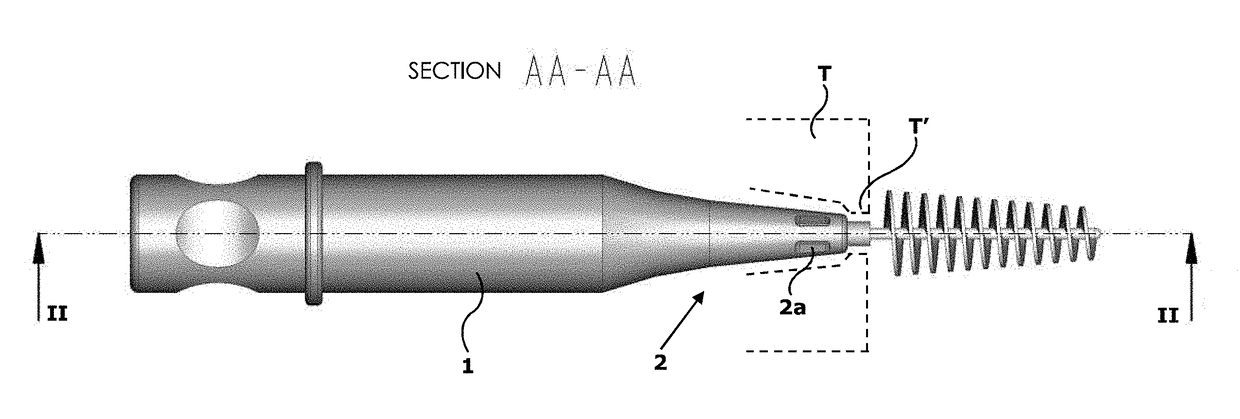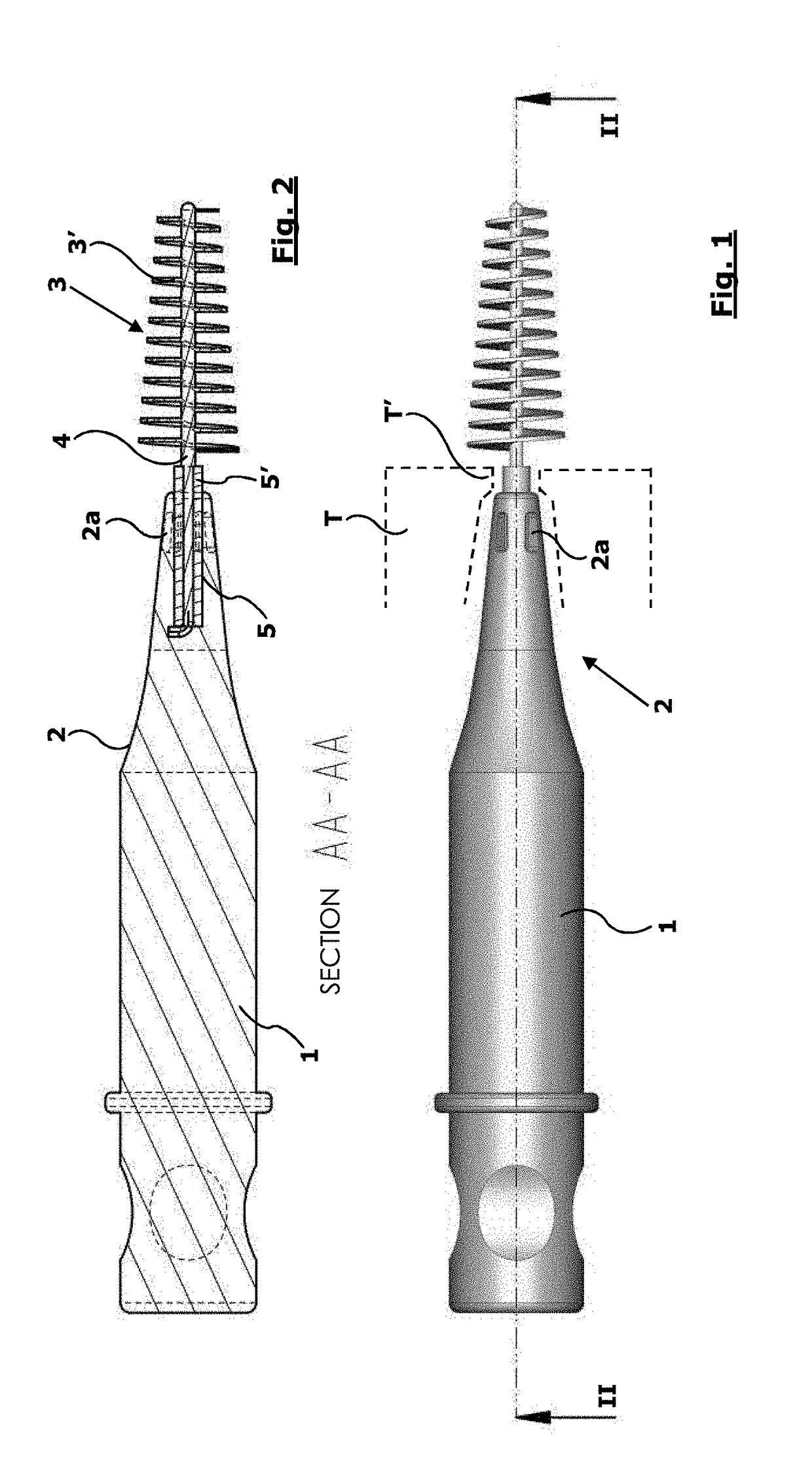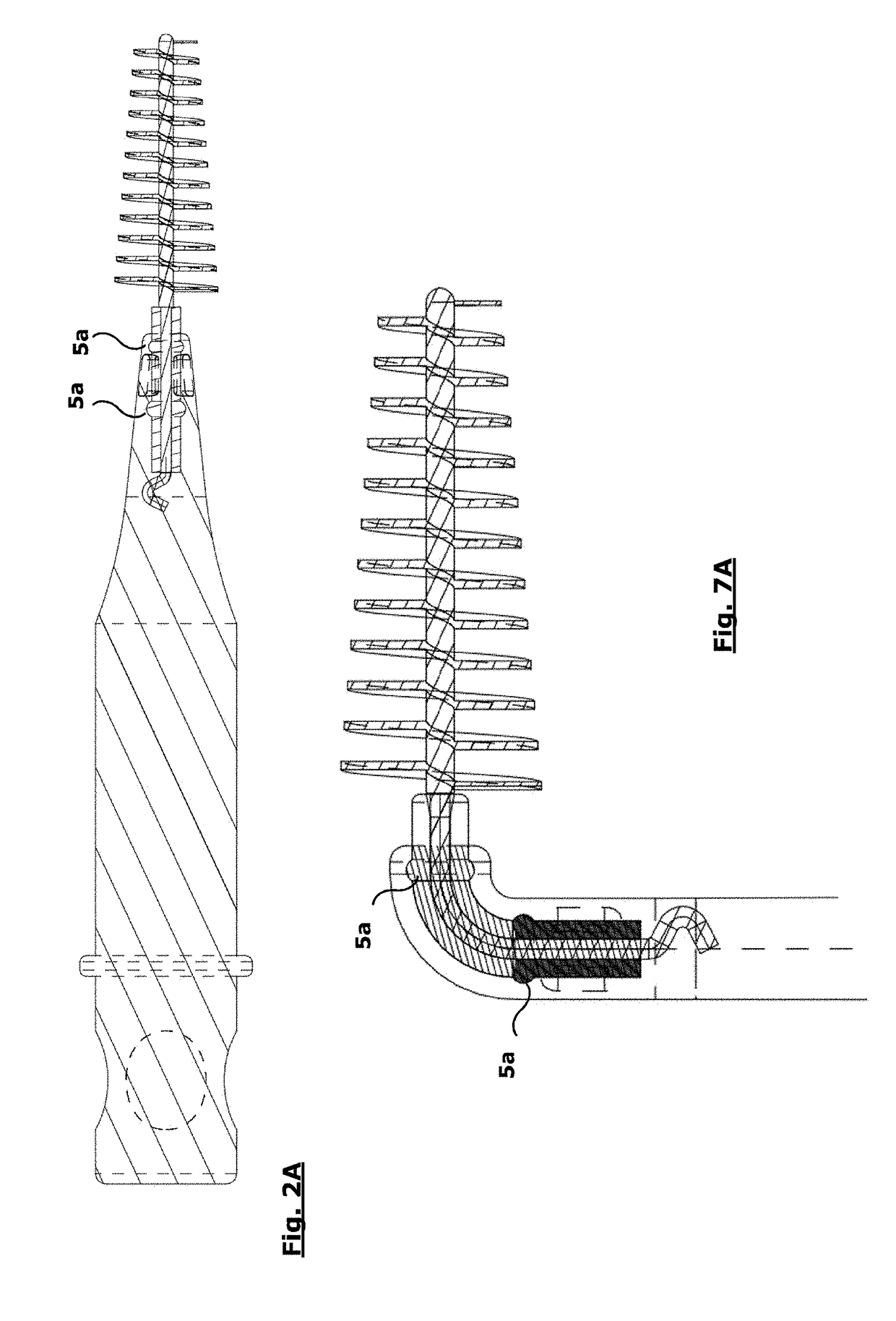Oral hygiene or cosmetic applicator brush device and manufacturing method thereof
a technology of cosmetic applicator and brush body, which is applied in the direction of brushes, domestic applications, brush bodies, etc., can solve the problems of small spherical body, unsatisfactory user consent, and unwanted formation of moulding burrs, and achieve the effect of effective elasticity of the bristled par
- Summary
- Abstract
- Description
- Claims
- Application Information
AI Technical Summary
Benefits of technology
Problems solved by technology
Method used
Image
Examples
Embodiment Construction
[0036]As shown in FIGS. 1-4, an interdental brush comprises, in a completely known way to a person skilled in the art, a handle 1, which ends with a support head 2 of a bristled body 3; this latter is formed by a plurality of bristles 3′ mounted on a stem 4. The stem 4 is in turn formed by a pair of metal wires, twisted on each other, also in a well known way and which, therefore, does not require further explanations.
[0037]The specific shape and the material used for the handle 1 do not have a significant importance in this context and, thus, will not be further described.
[0038]The only aspect to be consider is that at least the handle head 2, where the brush 3 is fixed, is constructed with mouldable plastic material.
[0039]The handle head 2 is usually formed as a cusp, in which the stem 4 or, better, the end portion free from bristles referred to, in the following, as tang, is inserted and locked. For this purpose, in the portion of the mould (represented only for its terminal part...
PUM
 Login to View More
Login to View More Abstract
Description
Claims
Application Information
 Login to View More
Login to View More - R&D
- Intellectual Property
- Life Sciences
- Materials
- Tech Scout
- Unparalleled Data Quality
- Higher Quality Content
- 60% Fewer Hallucinations
Browse by: Latest US Patents, China's latest patents, Technical Efficacy Thesaurus, Application Domain, Technology Topic, Popular Technical Reports.
© 2025 PatSnap. All rights reserved.Legal|Privacy policy|Modern Slavery Act Transparency Statement|Sitemap|About US| Contact US: help@patsnap.com



